Overscheduling
From Guide to YKHC Medical Practices
Definition: to schedule in excess of capacity.
Purpose: to achieve the desired productivity when a substantial percentage of patients are expected to be no-shows (i.e. not show up for their appointment).
For different no-show rates and different numbers of appointments, the likelihood of a certain number of patients showing up can be probabilistically modeled.
Second-order approximation (bootstrap method)
Assumptions:
- Each patient has the same likelihood to no-show.
- The likelihood that each patient is a no-show is statistically independent of the likelihood of no-show of the other patients.
In the table below, the columns show increasing no-show rates (10% thru 60%) and the rows show increasing numbers of patients scheduled (6 thru 12).
| 10% | 20% | 30% | 40% | 50% | 60% | |
|---|---|---|---|---|---|---|
| 6 |
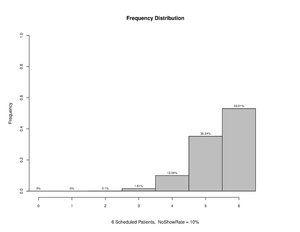
|
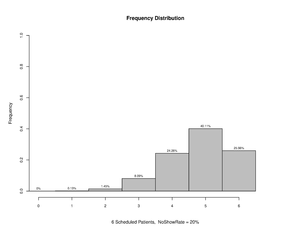
|
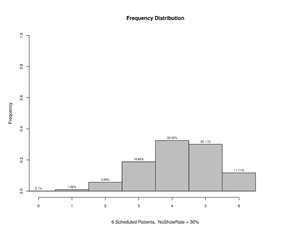
|
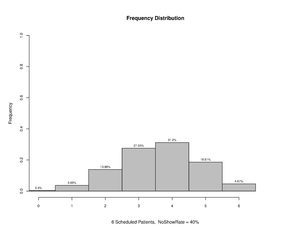
|
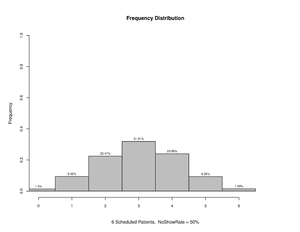
|
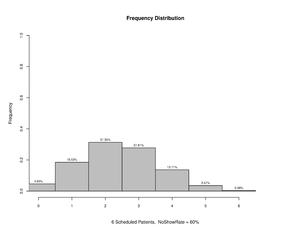
|
| 7 | 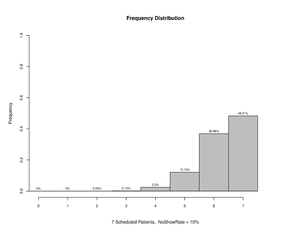
|
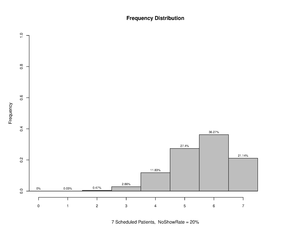
|
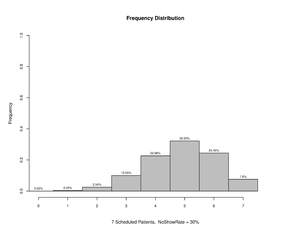
|
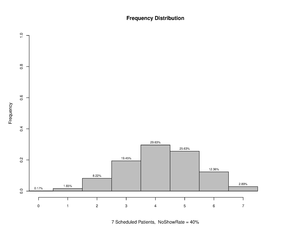
|
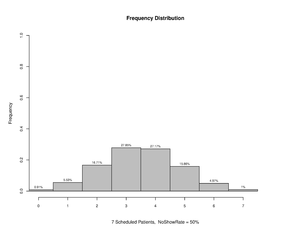
|
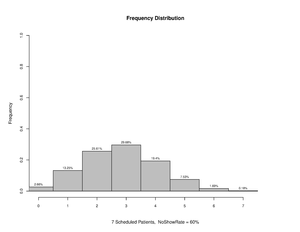
|
| 8 | ||||||
| 9 | ||||||
| 10 | ||||||
| 11 | ||||||
| 12 |
Limitations
- In reality, the patient no-show probability is only partially statistically independent but also partially statistically linked (i.e. via the weather).